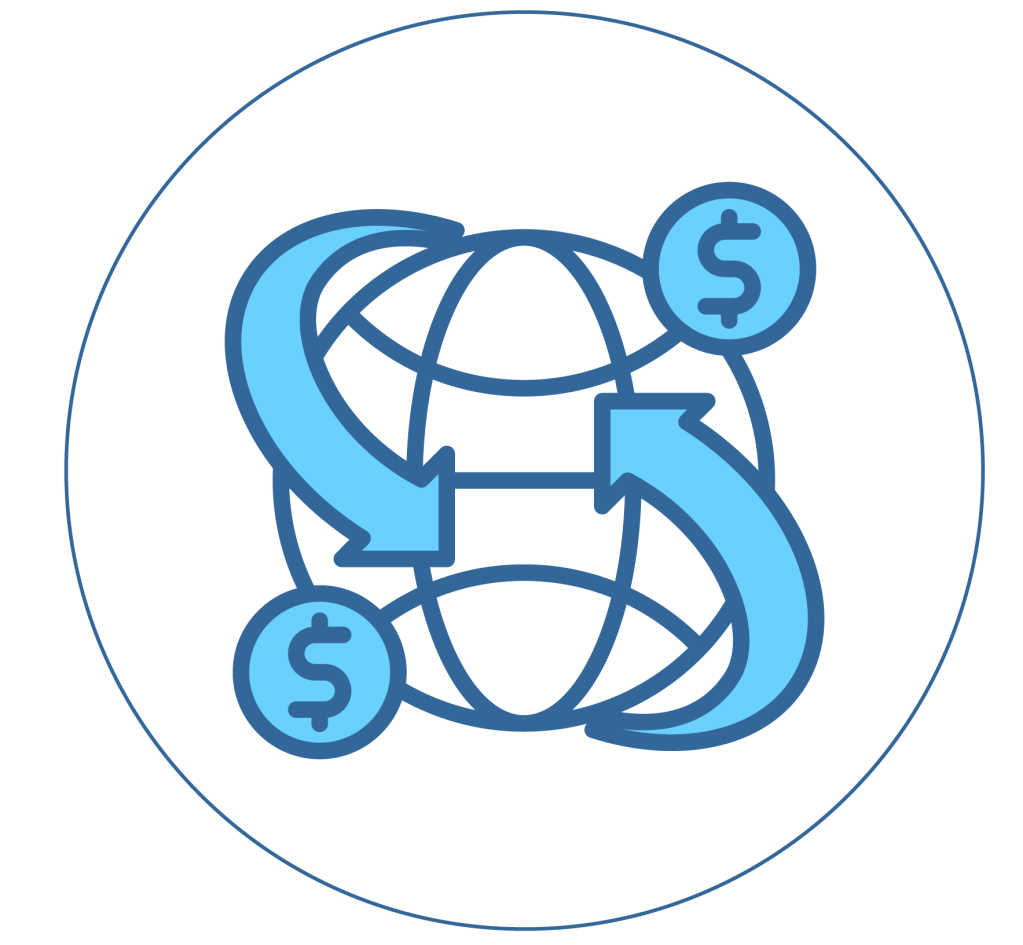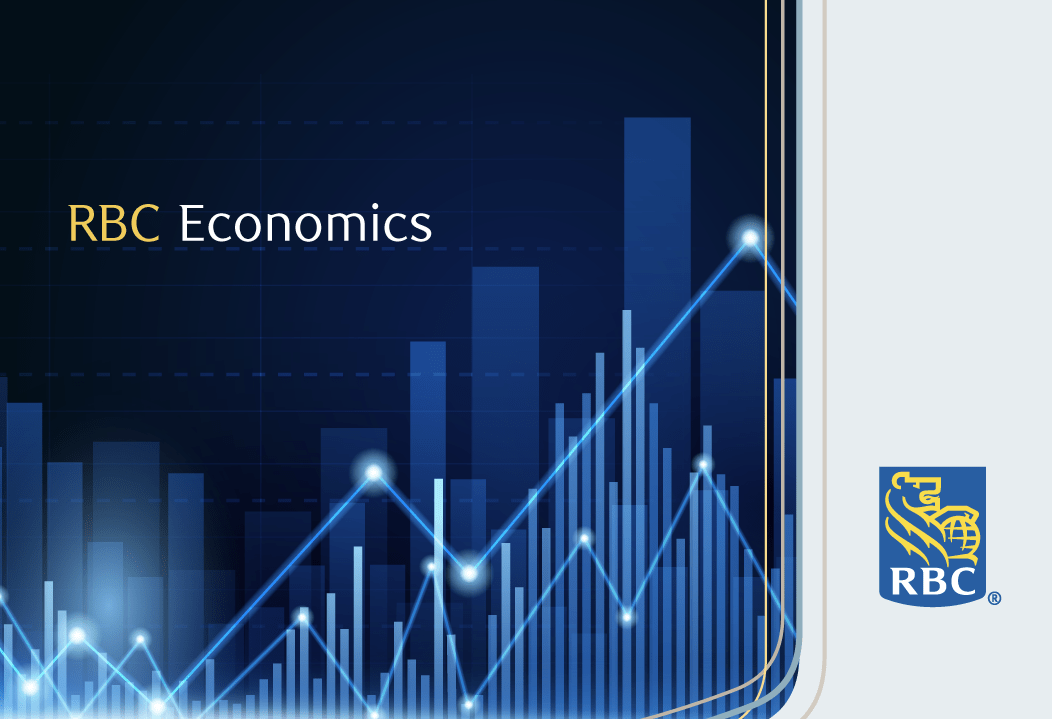Highlights:

Tariff impacts on inflation and the labour market in the U.S. are delayed slightly but won’t be prevented, leading to a pushback in the start of the Federal Reserve’s rate cutting timeline from September to December.

Further tariffs continue to be threatened on U.S. trade partners. For Canada, however, our interpretation is that these will be applied (if applied) only to non-USMCA compliant goods, which are in aggregate, less meaningful. As a result, we don’t expect a material change to our Canadian economic outlook.

Fiscal policies are adding to the uncertainty in both countries – U.S. deficit spending remains extraordinarily high with the extension of 2017 tax cuts but was already embedded in our prior assumptions. In Canada, increased fiscal support may benefit growth primarily in 2026 and beyond.

Issue in focus: U.S. duty collection has lagged tariff announcements due to reporting delays but also re-orientation of trade flows further away from China towards lower cost regions. That could mean the tariff rate eventually converges to a lower level than we think but will still be substantial enough to slow the U.S. economy.
Forecast changes:
Our Canadian and U.S. forecasts are largely unchanged despite material trade-related news out of the U.S. The overarching assumption that average tariff rate will remain in the 10% to 15% range this year is broadly holding, reinforced by the extension of the end of the 90-day pause on U.S. reciprocal tariffs to August1st but also early U.S. trade agreements with the U.K. and Vietnam that failed to significantly reduce tariffs to below 10%.
That said, the U.S. is still in the midst of a material trade shock. Letters have now been sent to a dozen of U.S. trade partners warning of steep increases in tariffs after the new deadline. The threat of an increase to the 25% blanket tariff rate on Canada originally imposed in early March is limited as long as the CUSMA exemption, which protects over 90% of Canadian goods exports to the U.S. remains in place. Still, heightened trade uncertainty could trigger another round of inventory frontloading.
While such frontloading has helped businesses counter trade shocks, it has also significantly distorted U.S. economic data. Tariff revenues in the U.S. only started to ramp up more significantly in May despite the bulk of U.S. tariffs were already in place since early April. Reporting delays might explain some of that lag but so would a rapid reorientation in trade flows as U.S. goods imports move away from higher cost regions. By our count, this has already lowered the effective tariff rate by 1.5% (read more in Issue in Focus below).
We expect those factors are delaying but won’t prevent the impact of disruptive tariffs on U.S. inflation and labour markets. But with the Federal Reserve highly dependent on actual observed changes in the economic data, we also expect the delays to prompt a later start to the Fed’s cutting cycle and look for the next cut to the fed funds target range to be in December rather than the September reduction previously expected.
Fiscal policy represents another significant source of uncertainty in our forecast. In the U.S.,the expected passage of the One Big Beautiful Bill Act (OBBBA) cements the extension of the Tax Cuts and Jobs Act of 2017 that was already assumed in our (and most others) base case forecasts. Still, the passage reinforces that government deficit spending will remain exceptionally high for this point in the economic cycle, keeping a floor under near-term activity at the cost of the longer run sustainability of U.S. government debt levels.
In Canada, the size and scope of fiscal support by federal and provincial governments is increasing and adding upside to our growth outlook, although more so in 2026 and beyond given possible delays in the rollout. Our base case of slow, but not recessionary growth in 2025 remains intact, with risks tilting to the downside given Canada’s direct linkages the U.S. economy, and by extension, heavy dependence on American trade policy.
A more detailed breakdown of month-over-month forecast changes:
● U.S. GDP forecasts remain on track. We continue to track a bounce-back in Q2 U.S. GDP, but largely reflecting statistical quirks (a reversal of a pre-tariff import surge that weighed on Q1 GDP growth) than underlying strength. Final domestic demand is on pace to slow from 1.5% in Q1 to 0.7% in Q2.
● The U.S. unemployment rate will continue to rise. It surprised on the downside in June (edging down to 4.1%), but that was along with slowing in employment growth and a sharp pullback in participation rates from younger cohorts. We still expect the unemployment rate to edge up to a peak of 4.6% in 2026 albeit at a more gradual pace than previously expected.
● A delay in the start of Fed rate cuts to December. A slower runupin U.S. unemployment rate this year will reduce the urgency of Fed rate cuts, increasing the odds of a longer stay on the sidelines amid a still highly uncertain trade backdrop. We now think the Federal Reserve will start cutting interest rates from currently elevated/restrictive levels in December and reach the 2.75%-3% terminal later in Q3 2026.
● Canadian GDP and unemployment rate forecasts stay put. In the June’s forecast update, we added 0.1 percentage point to GDP growth in 2025, and a larger 0.3 ppt to growth in 2026 based on our initial read of government spending plans. Larger and faster fiscal deployment than we assumed would produce bigger and earlier support for growth. In the near-term, GDP is tracking a slightly softer flat reading for Q2.
● The Canadian unemployment rate is still expected to hit a peak soon. Stabilizing job openings is signaling steadying hiring demand and limited further deterioration in the labour market.
● We believe the Bank of Canada is done cutting interest rates. We’ve long talked about how monetary policy isn’t the best tool for addressing tariff-induced pain in the economy. Upside risks to growth forecasts beyond the current year from fiscal spending, alongside early signs of warming housing activity in the summer, are also limiting the odds of additional BoC cuts this cycle.
● Inflation forecasts stay the course. Oil prices spiked higher in June due to the Israel-Iran conflict, but have since reversed the gains. We expect energy will keep subtracting from headline consumer price index growth in Canada and the U.S. this year. Limited development on the tariff front leaves us comfortable with expectations that core CPI will end the year at around 3.5% in the U.S., and 3% in Canada.
Central Bank
Current Policy Rate
(Latest Move)
Next Move

BoC
2.75%
0 bps in Jun/25
0 bps
Jul/25
The BoC chose to hold rates steady in June and detailed the dilemma between expectations of “a period of weaker economic growth” and recognition of “firmer underlying inflation”. The latest CPI data after the meeting showed moderation in price pressures, but the eventual size of tariff impact is also still highly uncertain. We hold our expectation that the BoC is unlikely to cut again in this cycle.

Fed
4.25-4.50%
0 bps in Jun/25
0 bps
Jul/25
The Fed is still firmly stuck in wait and see mode given highly volatile trade and fiscal policies and low visibility on how soon that could pass through to growth and inflation. The dot plot in June showed 50 basis points of cuts expected this year or a median Fed Funds of 3.875%. Still, Chair Powell cautioned these are with low conviction. We now expect just one 25 bps cut from the Fed this year in December.

BoE
4.25%
0 bps in Jun/25
-25 bps
Aug/25
The Bank of England MPC voted 6-3 in favour of holding the Bank Rate unchanged in June. Guidance of a “gradual and careful” approach was retained. Recent loosening in labour market conditions extends well to policymakers’ expectation that wage growth and consumer inflation will continue to ease this year, allowing for two more rate cuts in August and November for a terminal rate of 3.75%.

ECB
2.00%
-25 bps in Jun/25
0 bps
Jul/25
The European Central Bank cut its deposit rate by 25 bps to 2% in June, but with a surprisingly hawkish spin. President Christine Lagarde described policy as “well-positioned,” suggesting limited appetite for further cuts. Labour markets remain tight, and wage pressures sticky. We expect one more 25 bps cut in September for a terminal rate of 1.75% but think the ECB could already be at terminal.

RBA
3.85%
0 bps in Jul/25
-25 bps
Aug/25
The Reserve Bank of Australia opted to maintain the cash rate at 3.85% in July, but with obvious dissension. The hold was despite a clear downside in CPI in May. The RBA is cautiously waiting for the quarterly inflation print in July for confirmation that underlying inflation is sustainably easing towards target. We expect three more cuts from the RBA starting in August and leaving the terminal rate at 3.1%.
Issue in focus: Reorientation of trade flows means don’t fixate on the average tariff rate
Changes in U.S. tariff policy have been dramatic and frequent. At its peak, announced tariffs could have pushed the average tariff rate on goods imports in the U.S. to nearly 27% in April. Since then, that rate has been sliding lower to the 13.8% we think it’s at now.
Average tariff rate calculations—from us or others—are hardly perfect, because it uses trade flows from a prior period, which do not capture re-orientation in trade flows after new trade barriers are introduced. In reality, as U.S. importers source more goods from lower tariffed regions, the actual tariff rate in the U.S. will likely stabilize at a lower rate but still in double digits or at the highest level in almost a century other than in earlier this year.
Duties collected in the U.S. significantly lags tariffs announced
Taking calculated tariffs rates based on announcements at face value and applying them directly to trade flows this year would suggest massive under-collection of duties. Total custom duties amounted to US$90 billion between January and June, according to the U.S. Department of the Treasury, which is less than half of the US$188 billion implied by tariff announcements.
The reason there is such a large gap likely has to do, at least in part, with reporting delays. Volatile tariff policies after decades of trade liberation, and very short lead time between government notice and implementation have likely led to some disarray at customs.
According to the Federal Reserve Bank of New York’s latest survey, “businesses found it difficult to determine exactly what tariffs they were paying.” Delays were also evident in duty collection data, which only ramped up in May despite most new U.S. tariffs were imposed before that and continued to rise in June when U.S. tariff policies were broadly easing.
Trade flows are re-orienting and lowering total tariff bills
It is less surprising that inflation in the U.S. has yet to show a significant tariff impact, given how little tariff revenue was collected in the spring. Although the lag could also have to do with the reorienting of trade flows.
Indeed, most calculations of U.S. average tariff rate this year including our own use 2024 trade flows. We know, however, that following the implementation of 2018-2019 U.S. tariffs, trade re-oriented quickly and aggressively as importers sought out alternative lower cost sources to higher tariffed imports from China.
At that time, the share of U.S. goods import coming from China dropped from 22% in 2017 to 17% by the end of 2019, which represented a significant drop in the overall U.S. import tariff bill. By our count, changes in country weights during that period lowered the average tariff rate by about 0.5% at the end of 2019 (from 3.4% to 2.9%).
Similarly, using the latest trade flows in May instead of 2024 numbers would suggest the average effective U.S. tariff rate is 1.5% lower, or at 12.3% instead of the 13.8% we previously calculated, and much closer to actual duties rate of 10% from the U.S. treasury in June (assuming nominal goods imports stayed around May levels.)
Where trade flows settle is uncertain, but imports are reorienting
Circumventing tariffs should be more difficult for importers today. Tariff hikes are much more universal now compared to 2018 and 2019, when it was highly concentrated on one trade partner and a handful of products (washing machines, solar panels, steel and aluminum products). Current measures apply to over three quarters of U.S. goods imports, leaving U.S. importers much less room to maneuver today than back then.
Still, we’re seeing early signs of movements. China was hit with the most punitive tariffs of all U.S. trade partners again, and saw a steep decline in goods exports to the U.S. this year by a staggering 44% in just five months between December 2024 to May.
Some of that decline could be reflecting trans-shipping of Chinese exports through peripheral Asian economies—Taiwan and Vietnam both saw their shares of U.S. imports rise from last year – and thereby addressed by a new trans-shipment clause the U.S. is set to levy on Asian trade partners. Although, actual implementation of the clause could prove challenging.
Another part of early movements in trade flows could also be tied to U.S. businesses leveraging inventories that were built up earlier in the year, which will eventually run out.
Canada can expect to get a bigger share of a smaller pie
Canada’s the other major U.S. trade partner that’s been losing share in the U.S. import market this year, likely due to more targeted and punitive tariffs threatened before April.
Still, with one of the lowest tariffs now thanks to CUSMA exemptions, we continue to think Canada’s relatively well positioned for future competition among U.S. trade partners. Encouragingly, evidence continues to show that CUSMA exemptions are being used, allowing nearly 90% of Canadian goods to access the U.S. market duty-free in May, according to the latest data.
Overall, demand for foreign goods in the U.S. is expected to hold up in the near term mostly from a lack of comparatively cheap domestic alternatives, but will ultimately slow as the economy softens.
And, as much as the average tariff rate might converge to a lower rate, it will still be well above the 2.4% in 2024— marking an increase significant enough to slow U.S. industrial activity and demand for foreign goods. Close industrial integration with the U.S. economy means Canada won’t come out unscathed.

About the Author
Claire Fan is a Senior Economist at RBC. She focuses on macroeconomic analysis and is responsible for projecting key indicators including GDP, employment and inflation for Canada and the US.
This article is intended as general information only and is not to be relied upon as constituting legal, financial or other professional advice. The reader is solely liable for any use of the information contained in this document and Royal Bank of Canada (“RBC”) nor any of its affiliates nor any of their respective directors, officers, employees or agents shall be held responsible for any direct or indirect damages arising from the use of this document by the reader. A professional advisor should be consulted regarding your specific situation. Information presented is believed to be factual and up-to-date but we do not guarantee its accuracy and it should not be regarded as a complete analysis of the subjects discussed. All expressions of opinion reflect the judgment of the authors as of the date of publication and are subject to change. No endorsement of any third parties or their advice, opinions, information, products or services is expressly given or implied by Royal Bank of Canada or any of its affiliates.
This document may contain forward-looking statements within the meaning of certain securities laws, which are subject to RBC’s caution regarding forward-looking statements. ESG (including climate) metrics, data and other information contained on this website are or may be based on assumptions, estimates and judgements. For cautionary statements relating to the information on this website, refer to the “Caution regarding forward-looking statements” and the “Important notice regarding this document” sections in our latest climate report or sustainability report, available at: https://www.rbc.com/our-impact/sustainability-reporting/index.html. Except as required by law, none of RBC nor any of its affiliates undertake to update any information in this document.


